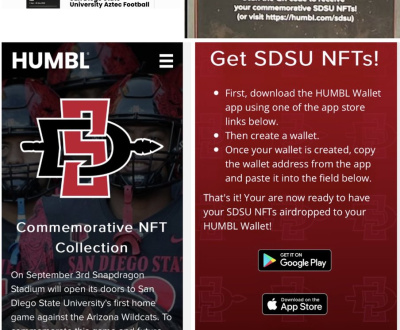How to Write a Table of Contents for an Essay
A Table of Contents is an organizational tool that lists the topics, subtopics and page numbers of each section in an essay. It helps readers quickly identify the main points of your essay, as well as guide the reader to specific sections they may be interested in reading. To write a Table of Contents for an Essay you will need to:
1) List all major topics/subtopics with corresponding page numbers in numerical order;
2) Use headings or bolded text to label each topic/subtopic; and
3) Use consistent formatting throughout your document.
When creating a Table of Contents for an Essay it is important to include any appendices or illustrations at the end along with their associated page numbers. Additionally, make sure you double check that all listed items actually appear on their respective pages before submitting your work!
- Determine the sections of your essay: Before you can create a table of contents, it is important to determine which sections and subsections need to be included in the paper
- This will help you decide how many levels of headings should be used in the table of contents as well as what information needs to go into each section
- Create subheadings: After deciding on the content for each section, create subheadings within those sections that give more specific detail about what each subsection covers
- For example, if one section is about history, then some possible sub-headings could include “Early History” and “Modern History” or “Prehistoric Times” and “Classical Times” depending on the nature of your topic
- Number Sections/Subsections: To make sure there is consistency throughout your essay use a numbering system such as 1
- , etc… when labeling the different headings and subsections in both text body and Table of Contents page
- Write Out Table Of Contents Page Headers & Subheaders : Once all sections have been numbered, write out headers for each level – typically these are written in bold font – followed by their corresponding number (e
- , Section One – Introduction – 1
- Then list any applicable subheaders below with their respective numbers (e
- , Overview – 1a
- Make sure that this page mirrors exactly what appears within your text body so readers know where they can jump ahead to find additional information quickly without having to read through every part before finding it
- 5
- Check The Spelling & Grammar : Double check for any spelling or grammar errors once all entries have been added; incorrect spellings can confuse readers who are trying to look up certain pieces from your work quickly
How to Make Table of Contents in Word
What is a Table of Contents in a Book
A Table of Contents (TOC) is a list of the chapters and major sections found in a book. It provides an overview of the entire book and serves as a helpful guide for readers to easily locate specific topics or information. This can be particularly useful for non-fiction books that have multiple chapters, subsections, or appendices.
A well-organized Table of Contents makes it easier for readers to navigate through the book’s contents quickly and efficiently.
How to Write a Table of Contents for a Book
Writing a table of contents for your book is an important step in the publishing process. It helps to ensure that readers can easily navigate through the chapters and sections of your book. To create a table of contents, start by listing all chapters or sections on separate lines with their corresponding page numbers next to them.
Then use headings and subheadings as appropriate to organize your content, so that it reflects how a reader will move through the material. Finally, add page numbers for each section, ensuring that they are accurate before submitting your manuscript for publication!
What is Table of Contents in Word
A Table of Contents in Word is a navigational tool used to quickly locate specific sections within a document. It is generated using the headings and page numbers of each section, allowing readers to easily find what they are looking for without having to scroll through the entire document. A Table of Contents can be inserted into a Word document with just a few clicks, making it an essential feature for longer documents that need to remain organized and easy-to-navigate.

Credit: classroom.synonym.com
Q1
What are the benefits of content marketing?
Content marketing is an effective and powerful strategy that can help businesses reach their target audience and drive conversions. Content marketing involves creating, curating, and distributing useful content to engage potential customers and build relationships with them.
This type of marketing not only increases brand awareness but also helps create trust between a business and its consumers—which ultimately leads to more sales. Content marketing has numerous advantages over traditional advertising methods such as TV ads or print media because it allows businesses to interact directly with their customers in a more personal way. Additionally, content creation provides valuable information about customer preferences which can be used by companies to optimize their products/services for better customer satisfaction.
Furthermore, since the cost of producing content is relatively low compared to other forms of advertising, it enables businesses to maximize their ROI while still providing quality material for their consumers. Finally, when done correctly, content marketing can generate organic traffic from search engines like Google which further enhances visibility online without any additional costs involved in paid advertisement campaigns.
What Information Should I Include in My Table of Contents for an Essay
When writing an essay, it is important to create a Table of Contents that accurately reflects the structure and layout of your paper. This helps readers quickly find information as they navigate through your document. A Table of Contents should include the title and any main headings or sub-headings within each chapter, section, or subsection in order to give readers an overview of what topics are covered in the paper.
The page numbers for each heading should also be included so that readers can easily locate specific sections. Depending on how detailed you need the table to be, you may also want to include additional subsections beneath main headings such as diagrams, figures, tables etc., along with their corresponding page numbers. It is important to ensure accuracy when creating a Table of Contents and take time before submitting your paper to double check all content listed and its associated pages are correct.
Your Table of Contents Should Include the Title And Main Headings, As Well As Any Subheadings You May Have Used Throughout Your Essay
The table of contents is an essential part of any essay. It provides readers with a way to quickly and easily locate the sections they are interested in reading. The title of your essay should appear at the top, followed by your main headings and subheadings.
Your main headings can be organized numerically or alphabetically, depending on what you think will work best for your particular essay. Subheadings are also important as they provide more detail about each section within the overall topic that is being discussed in the essay. By including them in your table of contents, you make it easier for readers to find the information they need without having to search through multiple pages or paragraphs looking for it.
Additionally, including page numbers beside each entry ensures readers know exactly where information pertaining to their interests can be found within your paper. In conclusion, creating a clear and thorough table of contents helps guide reader’s attention towards key points while providing them with quick access to further details if desired; an invaluable tool when writing any type of formal document such as an essay!
Q2
How to create a successful blog
Creating a successful blog takes dedication, creativity and hard work. The first step is to choose your topic – this should be something that you are passionate about and have knowledge of, as it will be easier for you to write interesting content on the subject.
It’s also important to come up with an original angle or approach that differentiates your blog from others. Once you’ve chosen a topic, decide on the format of your posts – will they be long form essays, short articles, opinion pieces or something else? You’ll want to think about how often you’d like to post new content – weekly is ideal but daily might be too much in the beginning.
Once these decisions have been made it’s time move onto designing and launching your site. If coding isn’t your strong point there are plenty of website builders such as Wix and Squarespace which make it easy for anyone to create a professional-looking website without having any technical skills at all. Once launched, start creating great content!
Quality over quantity is key here; focus on writing well-researched pieces that offer real value rather than churning out multiple low quality posts per week just for the sake of posting regularly. Promote yourself via social media channels such as Twitter and Facebook by sharing links so people can find out more about what you do – if they like what they see then hopefully they’ll subscribe!
How Do I Format a Table of Contents for an Essay
A Table of Contents is an important part of any essay as it helps to provide a visual overview for the reader. It should be included in the beginning of your essay before you start writing and let the reader know what topics will be discussed throughout the paper. To format a table of contents, begin by listing all major sections or headings in order from most general to most specific.
The title “Table of Contents” should appear at the top center on its own line with no other text around it. Underneath this heading, list each section that will be covered including introduction, body paragraphs, and conclusion (or whatever else applies to your particular essay). Each section listed should have two columns: one for page numbers and one for titles or subtitles.
Make sure all entries are lined up exactly under each other so they look neat and organized. If needed, you can use bold font or even different colors to make certain items stand out more than others if desired. After completing your table, double check that all page numbers are accurate as this is what readers will refer back to when navigating through your work!
Generally, It is Best to Use a Hierarchical Structure When Formatting Your Table of Contents—Meaning That Each Heading And Subheading is Numbered Accordingly And Associated With Its Respective Page Number Or Range of Pages within the Essay Itself
When formatting a Table of Contents for an essay, it is important to ensure that each heading and subheading are numbered accordingly and associated with the correct page number or range of pages within the essay. This allows readers to easily find any information they may be looking for quickly and without confusion. A hierarchical structure is generally best because it provides a clear outline that can be followed as one reads through the document.
The main headings should begin at level 1 (e.g., Introduction), while their corresponding subsections should appear beneath them in descending order (e.g., Background Information, Purpose Statement). Each subsection should also have its own respective page numbers listed next to it so readers know where exactly the content can be found in relation to other parts of the essay. By using this format, authors make sure their audiences will not become lost or confused when looking for specific information within their essays.
Q3
What are some of the benefits of using a CMS for website development?
A Content Management System (CMS) can be an invaluable tool when it comes to developing and maintaining websites. A CMS allows users to easily create, modify, and delete content on their website without needing any technical expertise.
It also provides a platform that is secure and reliable, meaning you won’t have to worry about accidental data loss or malicious attacks. Additionally, most modern CMSs provide features such as easy customization options so you can tailor your site exactly how you want it with minimal effort. Not only does this save time and money in the long run but makes managing your website much easier too!
Finally, CMSs often come equipped with powerful SEO tools which help optimize your site’s visibility on search engines like Google so that more people can find it – something every webmaster should take advantage of!
Is There a Specific Style I Need to Follow When Creating My Table of Contents for an Essay
When creating a Table of Contents for an Essay, there are certain guidelines to follow to ensure that the document looks professional and is easy to navigate. First, decide which style of formatting you want to use for your table of contents. There are two main styles: outline format or hierarchical format.
The outline format is generally used when the essay has fewer than four headings; it lists each heading in one column with its corresponding page number in another column next to it. Hierarchical formatting is suitable for longer essays as it displays a hierarchy of headings and subheadings based on their importance or relevance within the essay structure. When choosing this option, make sure you include all necessary levels down to the lowest level possible so that readers can easily find any topic they are looking for.
Secondly, consider how far apart each heading should be spaced on the page – some people prefer single-spaced lines while others opt for double-spacing between entries – whichever option you choose will depend on what looks best visually on paper and online (if you plan on publishing your essay digitally). Additionally, keep in mind that most tables contain at least two columns: one for listing the titles/headings and another one containing page numbers where these topics appear in full detail throughout your work; if need be add extra columns if needed such as author name(s), date published etc… Finally, try adding captions/descriptive labels underneath each column header so that readers can quickly get an idea about what information they can expect from them just by glancing over them without having read through subject matter itself line by line!
There are Generally No Strict Guidelines on How You Should Format Your Table of Contents—You Can Choose from Apa, Mla, Chicago/Turabian, Harvard Styles; However Some Institutions May Require That You Adhere to Their House Style Guide If Applicable
When formatting your Table of Contents, there are generally no strict guidelines to follow; however, some institutions may require that you adhere to their house style guide. Depending on the style you choose, you can pick from APA, MLA, Chicago/Turabian or Harvard styles. It’s important when deciding which one to use that you consider the purpose of your document and what type of audience it is intended for – this will help ensure that your Table of Contents is formatted appropriately.
For example: if writing an academic paper for a university course then using either APA or MLA would be suitable. Alternatively, if creating something for a corporate setting then sticking with Chicago/Turabian or Harvard styles would be wise. Furthermore, when formatting your Table of Contents always remember include page numbers and make sure subsections are clearly indicated (e.g., by using decimal points).
Finally don’t forget to check any applicable institutional requirements regarding format before submitting so as not to miss anything important!
Conclusion
In conclusion, a table of contents is an essential part of any essay. It serves as the roadmap for the reader to navigate through the paper and quickly find what they need. A well-crafted table of contents should have clear headings and subheadings that are easy to read and comprehend.
By following these tips and best practices, you can create an effective table of contents for your essay with ease!
About us and this blog
We are a digital marketing company with a focus on helping our customers achieve great results across several key areas.
Request a free quote
We offer professional SEO services that help websites increase their organic search score drastically in order to compete for the highest rankings even when it comes to highly competitive keywords.








